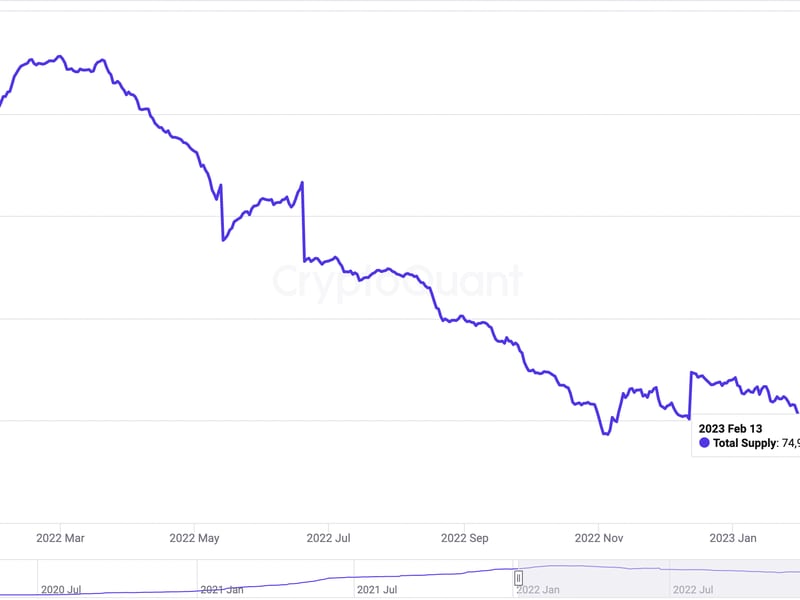Bitcoin Dominance Reaches 9-Month High

The bitcoin (BTC) dominance rate – the leading cryptocurrency by market value’s share of the total crypto market – has reached a nine-month high of 45.5%, according to data from charting platform TradingView.
BTC.D last reached over 45% on June 25, 2022.
The recent surge comes amid a turbulent two weeks in crypto markets with the failure of crypto-friendly banks Silvergate and Signature and a near meltdown of the wider banking sector. Bitcoin dominance has historically risen during periods of high stress because BTC is considered a less-volatile asset than most other cryptocurrencies.
BTC’s market share gains have also lately coincided with a nearly three-day surge in bitcoin’s price, which soared past $26,000 on Tuesday for the first time since last summer after the release of a mildly favorable consumer price index (CPI) data for February. The CPI report spurred a spike throughout the crypto market.
BTC was recently trading above $24,700, down 4% over the past 24 hours but up by double digits from where the price stood over the weekend.
“A bitcoin dominance run is generally viewed as healthy for the crypto market, as it signals that froth in the market is relatively low (crypto traders are choosing to buy bitcoin over more speculative altcoins),” FundStrat Research noted in a tweet Tuesday.
FundStrat said the spike could reflect investors' interest in bitcoin “reigniting when traditional banks such as SVB are failing.”
In December CoinDesk contributing columnist Noelle Acheson wrote that “BTC is the least volatile of the non-stablecoin crypto assets, and when traders and short-term investors are feeling confident they tend to prefer the high risk/high reward offered by some of the smaller tokens.”
Bitcoin’s dominance has also strengthened while stablecoin unrest has surfaced over the last few weeks, with the world’s second largest stablecoin USDC, depegging from the dollar following the collapse of Silicon Valley Bank. USDC has more recently regained its peg, but uncertainty about stablecoins’ path forward remains, particularly as regulators have increased their scrutiny of this asset.
Over the past year, the supply of stablecoins has steadily declined, according to data from CryptoQuant.









